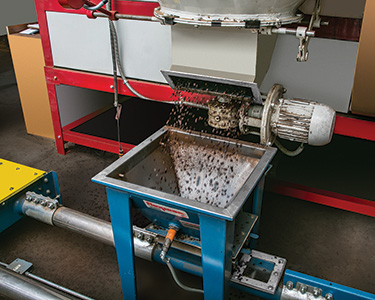 Click to enlarge
Click to enlargeBeans discharge from the roaster into a hopper from where they are metered into the first tubular cable conveyor line.
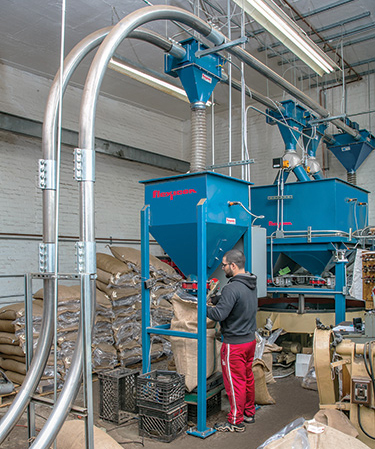 Click to enlarge
Click to enlargeAfter loading from the roaster, the first tubular cable conveyor moves beans to a surge hopper for manual bag filling, or to two wye diverter valves (background), allowing selective discharging into a special four-bin hopper prior to blending.
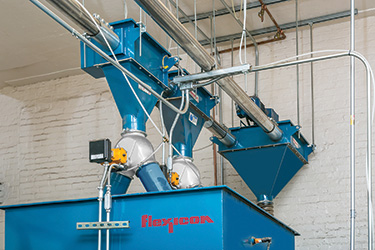 Click to enlarge
Click to enlargeEach outlet from the TCC line connects to a wye diverter valve through which beans flow selectively into each bin of the four-bin hopper before beans enter the blender below.
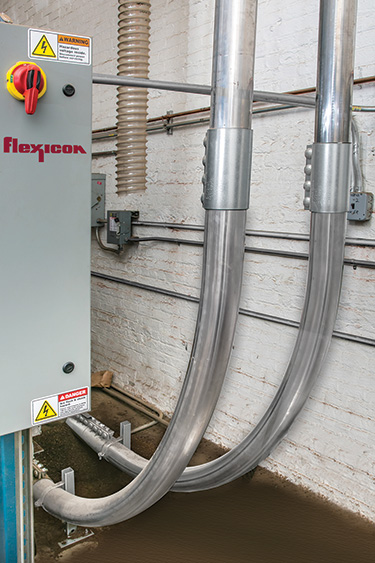 Click to enlarge
Click to enlargeThe transfer of coffee through both TCC circuits is controlled by a PLC.
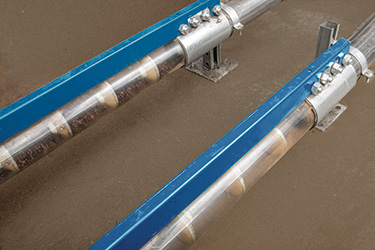 Click to enlarge
Click to enlargeTransparent section of TCC circuit allows operators to observe system performance and fill level of 'pockets'.
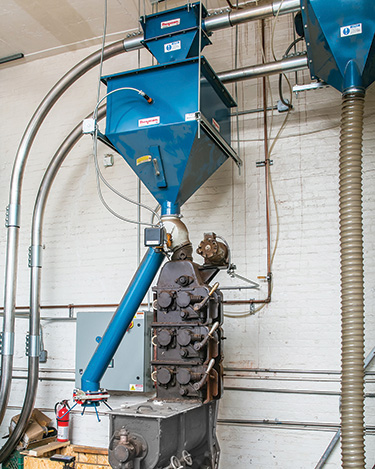 Click to enlarge
Click to enlargeA surge hopper receives roasted beans from the blender via the second TCC line. At left, beans gravity feed through the blue downspout for manual bag filling of whole bean blends. At right, the roasted beans flow to a grinder in preparation for degassing.
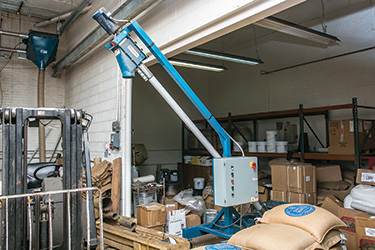 Click to enlarge
Click to enlargeAble to be located off-line until needed beneath the grinder, a portable flexible screw conveyor is used to transfer ground coffee into bulk bags.
 Click to enlarge
Click to enlargeAfter degassing overnight, ground coffee is discharged from a bulk bag on the split-frame bulk bag discharger while the flexible screw conveyor transfers the coffee to the packaging machine.
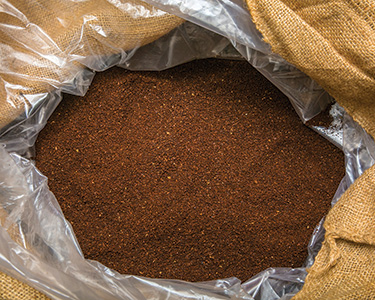 Click to enlarge
Click to enlargeGround, roasted coffee product
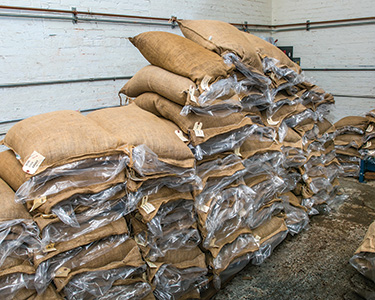 Click to enlarge
Click to enlargeDaily output includes 50 lb (23 kg) bags of coffee for further retail packaging.


 Click to enlarge
Click to enlarge Click to enlarge
Click to enlarge Click to enlarge
Click to enlarge Click to enlarge
Click to enlarge Click to enlarge
Click to enlarge Click to enlarge
Click to enlarge Click to enlarge
Click to enlarge Click to enlarge
Click to enlarge Click to enlarge
Click to enlarge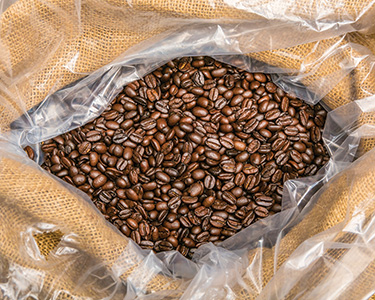 Click to enlarge
Click to enlarge Click to enlarge
Click to enlarge Click to enlarge
Click to enlarge